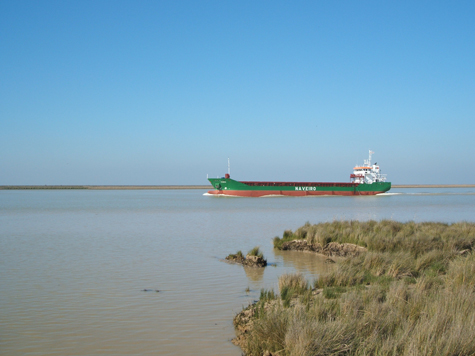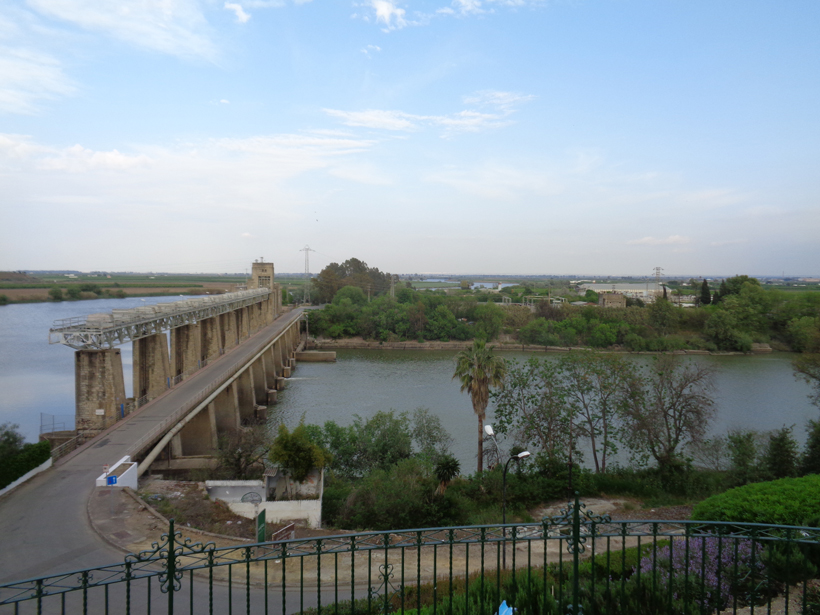Source: Journal of Geophysical Research: Oceans
The Guadalquivir River empties into the Atlantic near Seville on the southwest coast of Spain. Its last 110 kilometers flow through an estuary, where the rise and ebb of tides are the primary factors influencing water dynamics. However, periods of high freshwater discharge from the upstream Alcalá del Río Dam alter water flow as well, with implications for navigation and flood risk assessment in this highly trafficked zone.
In a new study, Losada et al. analyze how high-discharge events disrupt normal water levels and currents in the Guadalquivir River’s estuary. The findings build on their previous research, which focused on normal river flow conditions. High-discharge events are defined as those with freshwater flow of 400 cubic meters per second or more, whereas flows of less than 40 cubic meters per second are considered normal.

From 2008 to 2011, the researchers used instruments installed along the main estuary channel at various depths to measure sea level, current flow, water quality, temperature, turbidity, conductivity (which can indicate salinity), and more. They used a variety of mathematical analyses to make sense of the complex interactions between these factors during and after heavy discharge events.
The results suggest that high-discharge events alter water levels and currents in the estuary by triggering the release of large amounts of suspended sediment. The sediment forms layers of different concentrations in the water, which inhibits vertical transfer of momentum between the layers. These effects last for 60 days after a high-discharge event.
Mathematical analysis suggests that the layers of different sediment concentrations inhibit vertical momentum by increasing density stratification. This disconnects deeper water flow from overlying flow, thereby yielding lower friction for the tidal wave propagation. Flow-suspended sediment feedback causes the friction coefficient to vary over time.
These findings could contribute to the development of reliable models of water dynamics in the Guadalquivir River Estuary. Ultimately, the authors hope that their research will help improve navigational conditions in the estuary and inform flood risk management. (Journal of Geophysical Research: Oceans, https://doi.org/10.1002/2016JC011984, 2017)
—Sarah Stanley, Freelance Writer
Citation:
Stanley, S. (2017), Dam discharge events alter water flow in an estuary in Spain, Eos, 98, https://doi.org/10.1029/2017EO071901. Published on 24 April 2017.
Text © 2017. The authors. CC BY-NC-ND 3.0
Except where otherwise noted, images are subject to copyright. Any reuse without express permission from the copyright owner is prohibited.

